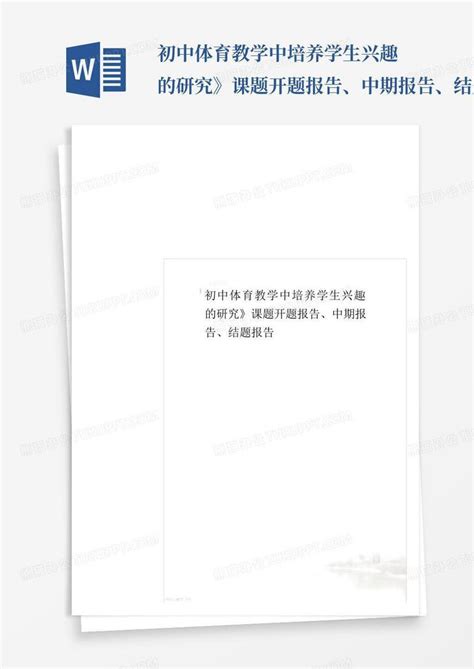Title: Enhancing Physical Education in Middle School: A Mini Research Project
Introduction:
Physical education (PE) in middle school plays a crucial role in promoting physical health, social interaction, and overall wellbeing among students. This mini research project aims to explore strategies to enhance the effectiveness of PE in middle school settings.
Literature Review:
1.
Importance of Physical Education in Middle School:
Studies indicate that PE programs in middle school contribute to improved physical fitness, enhanced cognitive function, and better academic performance.
2.
Challenges in PE:
Common challenges include lack of resources, limited time allocation, and varying student interests and abilities.
3.
Effective PE Strategies:
Incorporating diverse activities, promoting inclusivity, and integrating technology can enhance engagement and learning outcomes in PE classes.
Methodology:
1.
Survey Design:
A survey will be conducted among middle school students to assess their perceptions of PE, preferred activities, and suggestions for improvement.
2.
Interviews:
Interviews with PE teachers will gather insights into current practices, challenges faced, and potential areas for improvement.
3.
Observations:
Classroom observations will be conducted to understand the dynamics of PE classes and identify opportunities for enhancement.
Findings:
1.
Student Preferences:
The survey reveals that students show a preference for team sports such as basketball and soccer, but also express interest in alternative activities like dance and yoga.
2.
Teacher Insights:
PE teachers highlight the need for more resources, professional development opportunities, and support for addressing diverse student needs.
3.
Observations:
Observations indicate that incorporating variety, providing clear instructions, and fostering a supportive environment positively impact student engagement and participation.
Recommendations:
1.
Diversify Activities:
Introduce a wider range of activities to cater to diverse interests and abilities, including both traditional sports and alternative fitness options.
2.
Professional Development:
Provide ongoing training and workshops for PE teachers to enhance their skills in curriculum design, classroom management, and incorporating technology.
3.
Resource Allocation:
Advocate for increased funding and resources to improve facilities, equipment, and access to extracurricular sports programs.
4.
Inclusivity:
Implement strategies to ensure inclusivity and accommodate students with varying levels of physical ability, including modifications and adaptations to activities.
5.
Collaboration:
Foster collaboration between PE teachers, classroom teachers, and parents to reinforce the importance of physical activity and promote a holistic approach to student wellbeing.
Conclusion:
By addressing the preferences of students, the needs of teachers, and the challenges faced in PE classes, this mini research project provides valuable insights and recommendations for enhancing the effectiveness of physical education in middle schools. Through collaborative efforts and strategic interventions, schools can create a more inclusive, engaging, and impactful PE experience for all students.

This mini research project serves as a foundation for further exploration and implementation of evidencebased practices in middle school physical education.
